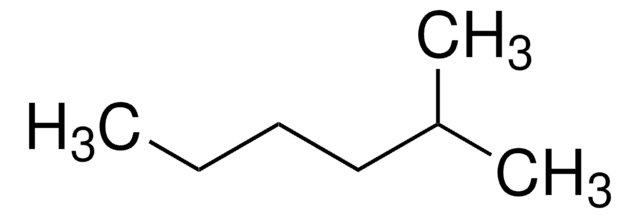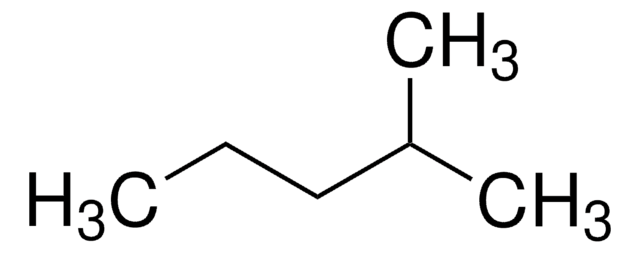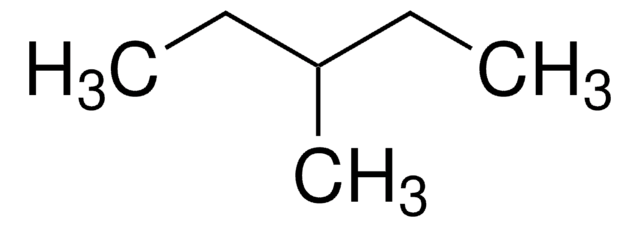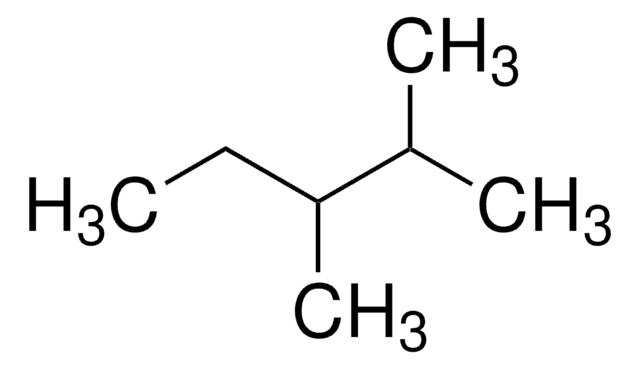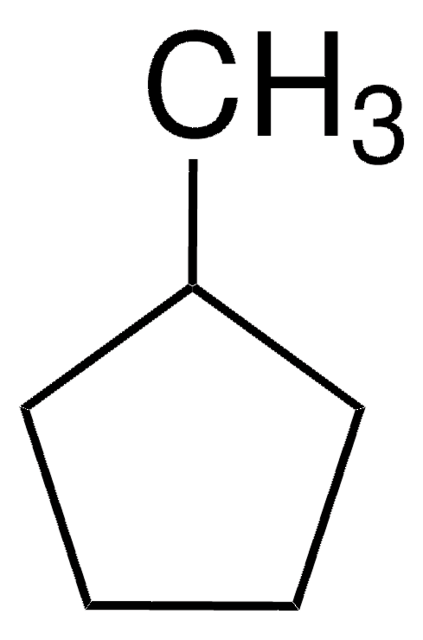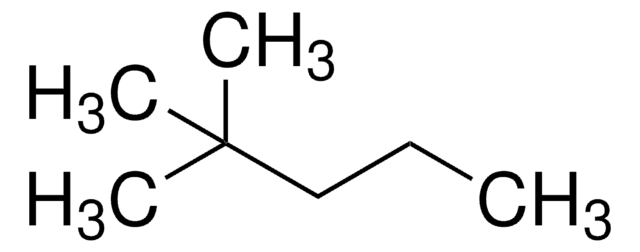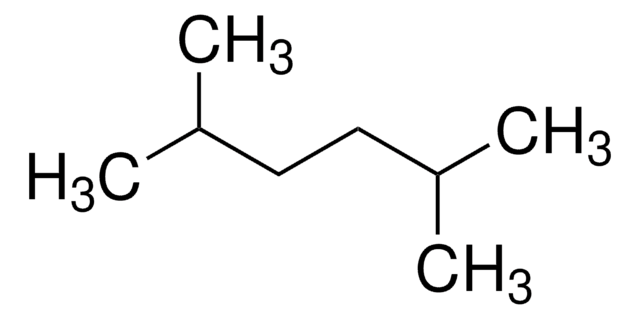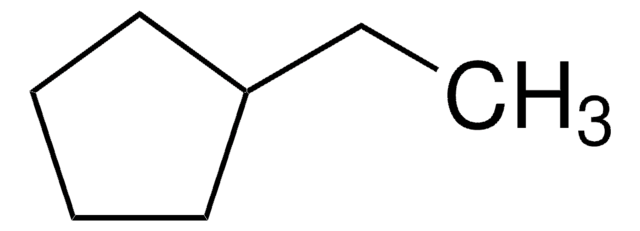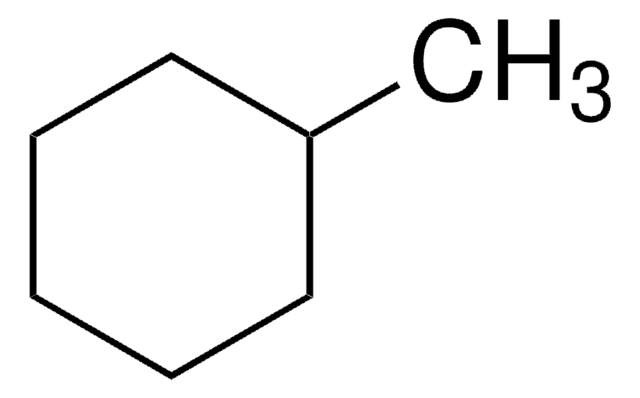M49801
3-Methylhexane
99%
Synonyme(s) :
(±)-3-Methylhexane, 2-Ethylpentane
About This Item
Produits recommandés
Pression de vapeur
2.13 psi ( 37.7 °C)
Niveau de qualité
Essai
99%
Forme
liquid
Température d'inflammation spontanée
536 °F
Limite d'explosivité
~7 %
Indice de réfraction
n20/D 1.388 (lit.)
pb
91 °C (lit.)
Pf
−119 °C (lit.)
Densité
0.687 g/mL at 25 °C (lit.)
Chaîne SMILES
CCCC(C)CC
InChI
1S/C7H16/c1-4-6-7(3)5-2/h7H,4-6H2,1-3H3
Clé InChI
VLJXXKKOSFGPHI-UHFFFAOYSA-N
Vous recherchez des produits similaires ? Visite Guide de comparaison des produits
Application
- Cu-catalyzed hydrocarboxylation of simple alkanes to corresponding branched monocarboxylic acids in aqueous medium at low-temperature.
- Au-catalyzed oxygenation of alkanes with H2O2 in acetonitrile.
- FeCI3 catalyzed photooxygenation of simple alkanes to corresponding alcohols in presence of atmospheric O2.
Mention d'avertissement
Danger
Mentions de danger
Conseils de prudence
Classification des risques
Aquatic Acute 1 - Aquatic Chronic 1 - Asp. Tox. 1 - Flam. Liq. 2 - Skin Irrit. 2 - STOT SE 3
Organes cibles
Central nervous system
Code de la classe de stockage
3 - Flammable liquids
Classe de danger pour l'eau (WGK)
WGK 2
Point d'éclair (°F)
30.2 °F - closed cup
Point d'éclair (°C)
-1 °C - closed cup
Faites votre choix parmi les versions les plus récentes :
Déjà en possession de ce produit ?
Retrouvez la documentation relative aux produits que vous avez récemment achetés dans la Bibliothèque de documents.
Les clients ont également consulté
Protocoles
Protocol for GC Analysis of Hydrocarbons in Gasoline on Petrocol® DH
This application demonstrates the suitability of the Petrocol column for the efficient analysis of hydrocarbons as listed in ASTM method D5134.
-Xylene; Nonane; Propylbenzene; Mesitylene; 1,2,4-Trimethylbenzene; 1,2,3-Trimethylbenzene; 1,3-Diethylbenzene; 1,4-Dimethyl-2-ethylbenzene; 1,2-Dimethyl-4-ethylbenzene; Durene; 1,2,3,5-Tetramethylbenzene; 1,2,3,5-Tetramethylbenzene; 2-Methylnaphthalene (β)
GC Analysis of Hydrocarbons in Gasoline on Petrocol® DH, Isothermal
Notre équipe de scientifiques dispose d'une expérience dans tous les secteurs de la recherche, notamment en sciences de la vie, science des matériaux, synthèse chimique, chromatographie, analyse et dans de nombreux autres domaines..
Contacter notre Service technique